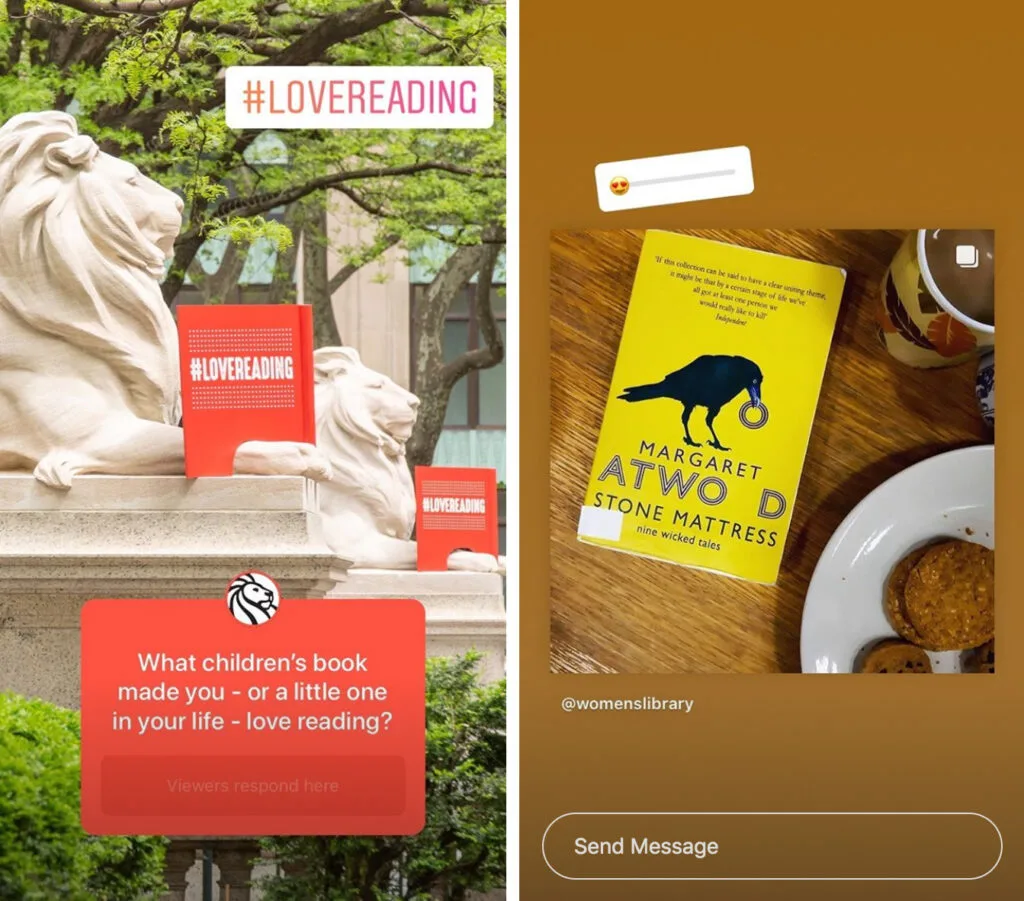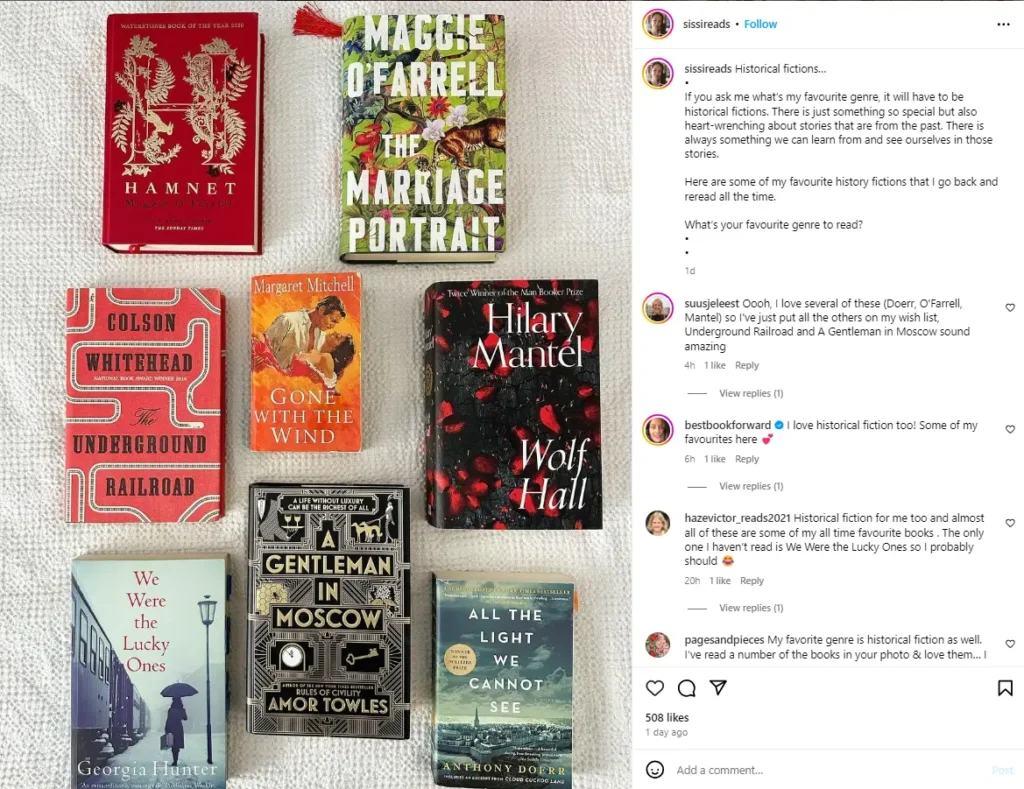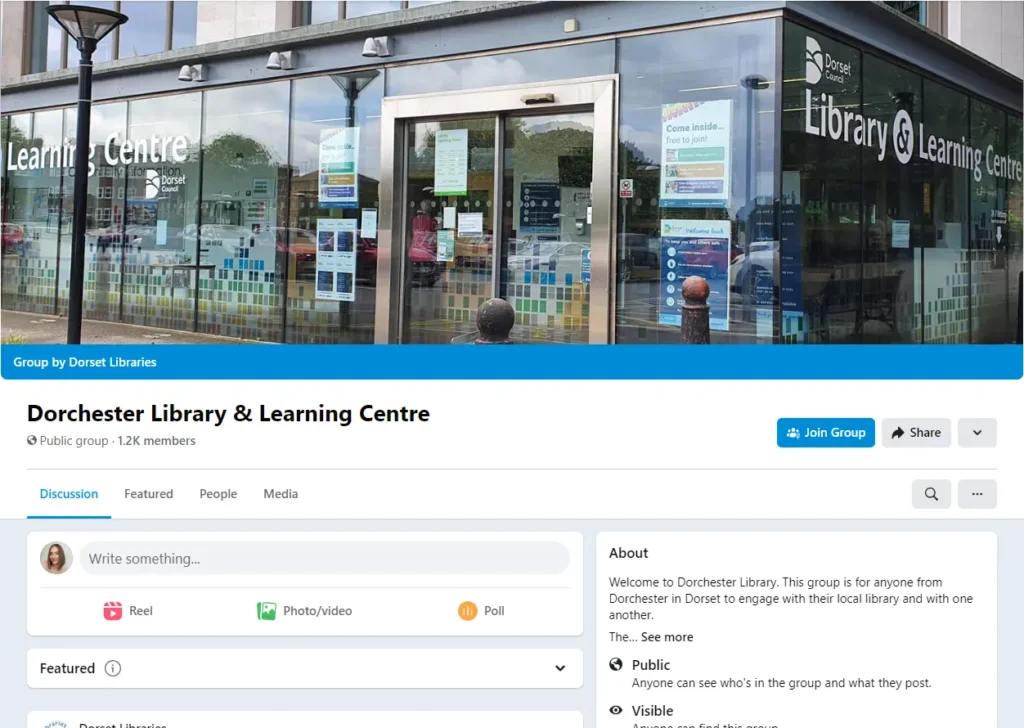In the latest of our social media guides, we’re talking all things book-related with a few handy hints on how to master social media for libraries.
Modern digital marketing, conducted online, and a traditional industry that relies on footfall and visitor attendance might not seem like they go hand-in-hand. But actually, social media marketing is the ideal match for libraries. It could even help boost visits at a time when library use is in decline. It’s also a great way to show your library is forward-thinking and adapting to modern technology with a wider range of services.
Should libraries be on social media?
Before we can talk about how to do social media right for libraries, we need to consider the main goal. Do you want to promote reading in general? Do you want to highlight the importance of libraries in society? Do you want to promote any events happening at the library? Or do you want to promote the specific books, collections, or authors you have available in the library?
Knowing your main goals for using social media, you can choose the right platform for each goal.
Which social media platform is right for libraries?
The key to getting social media for libraries right is knowing which platform to use, and what for. Libraries have a very wide audience from school kids to retirement age so adjusting your social media content to fit the platform and its main users is crucial. Let’s have a look at the different platforms and their potential uses for libraries.
TikTok
There is a whole community of book lovers that have taken over TikTok with book recommendations, reviews, and book memes, united by the hashtag #BookTok. There are whole collections of books that have gone viral on the platform. It is the perfect place for libraries to reach their younger audience. And it works in both ways – a lot of bookshops have already dedicated whole sections for books seen on TikTok.
Similarly to TikTok, there is a community of book lovers on Instagram under the hashtag #bookstagram. Instagram users are slightly older (think millennials) than TikTok so it’s a great place to share aesthetic photos and collaborate with authors and influencers as it allows you to tag people and get your content visible to your target audience. Instagram stories are also a great place for quick updates and any library news.
Facebook is a great place for promoting events happening at the library. You can create one-off events or recurring event series. You can also utilise Facebook groups for people in the area and share updates, new stock, and anything interesting happening at the library. Facebook groups are great for cultivating a community.
X (also known as Twitter)
Despite the love-hate relationship that people have with X, it’s the main platform for a lot of writers, journalists and news outlets, making it a great platform for sharing quick updates and library news.
Although LinkedIn might not seem like the first choice for a library to be on social media, it’s a great platform for sharing the B2B side of libraries. A lot of libraries offer many other services besides loaning books. It’s perfect for sharing any innovative solutions, involvement in the council and wider community, and resources for local businesses to reach the people who are actively involved in improving the local community.
Social media content ideas for libraries
We’ve briefly covered the best types of posts for each platform in the previous section, but let’s have a look at some specific content examples that work wonders for libraries.
Host (online) events
Host live webinars, panel talks, discussions, or book clubs for your audience. It’s an easy way to provide value beyond the library walls and establish yourself as a digital community hub.
We love the following ideas:
- Virtual book clubs, which meet regularly online to discuss a specific book or author.
- Virtual library tours, which give users the chance to familiarise themselves with the opportunities the library offers.
- Educational webinars teaching how to make the most of books.
New South Wales’ State Library hosted a radio event at the library which they also shared on their social media showing that off-line content can also brilliantly work online.
Use polls and quizzes
Engage and entertain your audience by creating polls, asking them to answer a question or leave a reaction. There’s plenty of options for interactive elements on Instagram and Facebook stories, but you can also create polls on Twitter and LinkedIn.
You could try:
- Creating a poll on which version of a book cover people like the most.
- Asking whether people preferred the book or film version of certain novels.
- Which author people would be most interested in hearing speak at an event.
- Posting quotes from famous literature and asking people to name the book or author.

Collaborate with local influencers
Use social media to find book-loving influencers in your area and collaborate with them by hosting an online or in-person event (to also share online), or ask them to do a takeover on the library social media account sharing their favourite books in the library.
Ideas for collaborative content:
- Library review – get them to share why they love the library and what to expect when visiting it.
- Invite them to broadcast an event at the library.
- Invite them to host an in-person book club event for their audience and promote it on social media.
- “Day in the life” or “study with me” videos at the library.
@hungry_artist_ The best free study spot in London? #studyspots #placestostudy #studentguide #thebritishlibrary #londonlibraries ♬ original sound - Hungry Artist | Food Blog
Showcase prominent authors
Are there any local authors who have a loyal readership or anyone upcoming whose books have just become available at the library? Create posts introducing them and their stories, inviting people to loan their books. You could also team up with the author to host a live event on Facebook or Instagram, where people can ask them questions.
Use #BookTok and #Bookstagram
Entertain your younger audience by jumping on the latest #BookTok trends on TikTok and #Bookstagram posts on Instagram. It might seem silly at first, but your younger audience will for sure appreciate the effort! Use the hashtags to reach your target audience and increase engagement on your posts.
Get started with these ideas:
- Feature the viral books that are available to loan at the library and encourage your audience to read them.
- Create guides for specific genres.
- Create educational videos and helpful tips for navigating the world of books.
- Recreate memes and trending ideas that are relevant to books.
Video content is one of the best performing types of content on both TikTok and Instagram, but static image posts are still a quick and easy way to educate your audience.

@chaoticbookgremlin 9/10 bookworms recommend this method #BookTok #bookworm #bookobsessed #bookwormproblems #reader #books #tbr ♬ original sound - Emma 📚💗
Librarian behind the scenes
It’s worth also using trending sounds and concepts and adapting them to show the behind-the-scenes of librarian work or generally funny situations related to libraries or loaning books. These meme-style videos typically generate a large amount of views and engagement while also improving the overall perception of libraries as cool places.
There are plenty of examples of librarians sharing their behind-the-scenes, funny situations that happen in their work, and inspiring stories they come across.
This type of content also generates a lot of engagement as it has a high entertainment value.
@cincylibrary No books were harmed in the making of this film. #CincyLibrary #CincinnatiLibrary #Library #Fyp #LibraryTiktok @belitskaydi ♬ original sound - Cincy Library
Share book reviews and recommendations
Create a social media series around book reviews and the library’s recommendations. You could tailor it to genres, ages, or similar books to make it easy for your audience to choose from the selection of hundreds of books. You could source these reviews from your team internally, but it’s also a great idea to get influencers involved to widen your reach.
@lillyslibrary case study
This is a brilliant video that resonates with a variety of dirrent people who are looking for different books to read. Although Lilly has created a very high-quality video, you can get started by simply showing 3 recommendations for each personality type.
Create a Facebook community group
Facebook groups are an easy and effective way to cultivate a community, share library news and updates and host community-only events. Facebook groups tend to receive a lot more engagement than Facebook pages and it’s a great place for your audience to get to know each other and engage over similar interests.
You could try these posts:
- Share news and quick updates about the library’s opening times, new collections, events and more.
- Ask questions from the community to start conversations and build relationships.
- Share videos and photos of recent events.

Celebrate national days
National days, weeks and months are low-hanging fruit when it comes to content. There are the obvious ones, such as World Book Day, Celebrity Read a Book Week and Children’s Picture Book Day, but you could also join in with others such as:
- Pride Month could include several posts showcasing great LGBTQ+ literature and authors.
- International Women’s Day could include takeovers by female authors, and posts relating to feminist issues.
- National Gardening Day could feature great gardening books, and gardening tips from green-fingered authors.
We love how Sussex Library joined in with Mental Health Awareness Week by posting a relevant quote. They then added some local images and hashtags.

Engage with your audience
Social media is called social for a reason – it’s designed to build relationships and connect people. Whichever platform you decide to use, it’s important to interact with your existing audience – this will keep them interested, and inspire other users to connect with you.
You could also consider adding a live chat option to your website and then advertising it via your social media channels.
The Royal Holloway Library X account is a brilliant example of how libraries can interact on social media; they keep it professional, and helpful and add in a touch of light-hearted comedy.
Over on Facebook, the staff behind the Surrey Libraries are great at friendly, personal replies – they’re also not scared to drop in an emoji or two!


how can a social media agency help?
- Assess your current content strategy to identify gaps for improvement.
- Create a holistic content strategy that aligns with your goals.
- Analyse competitors to identify opportunities.
- Create a consistent content plan that aligns with your goals.
- Create a variety of engaging content that embodies your brand.
- Analyse content performance to improve strategy.
in conclusion
Libraries are not extinct and social media is a wonderful avenue to reach more readers and library visitors. Try out some of the content ideas above and you’ll be surprised how engaged your community can be.
Editor’s Note: This article was originally published in 2020, and has been updated for relevance in January 2024.





